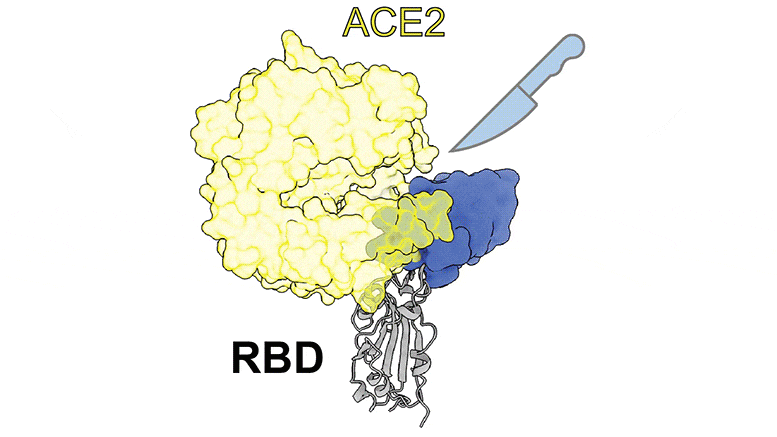SARS-CoV-2 Nanobodies Are Remarkably Active Against Mutations Found in COVID Variants – Including Delta
0 View
Share this Video
- Publish Date:
- 10 August, 2021
- Category:
- Covid
- Video License
- Standard License
- Imported From:
- Youtube
Tags

Assistant Professor of Cell Biology, University of Pittsburgh School of Medicine. Credit: UPMC
Near-atomic look at three ways to thwart SARS-CoV-2 variants
SARS-CoV-2 nanobodies — microscopic molecules developed at the University of Pittsburgh School of Medicine that neutralize the virus in animals — are remarkably active against mutations found in variants, including Delta, according to new research by scientists at Pitt and Case Western Reserve university.
The findings, published Aug. 3, 2021 in Nature Communications, describe three different mechanisms by which the nanobodies disarm the virus, prevent it from infecting cells and causing COVID-19. The near-atomic level structural analysis provides guidance for the development of future vaccines and therapies that may work against a wide variety of coronaviruses, including variants not yet in circulation.
“This is the first time anyone has systematically classified ultra-powerful nanobodies based on their structure,” said senior author Yi Shi, Ph.D., assistant professor of cell biology at Pitt. “By doing so, we have not only provided details about the mechanisms our nanobodies use to defeat SARS-CoV-2, but also revealed clues for designing future therapies.”
Late last year, Shi and his team announced that they had extracted small but extremely potent SARS-CoV-2 antibody fragments from llamas, which could be processed into inhalable therapies to prevent and treat COVID-19. Since then, preclinical studies have verified that the powerful nanobodies prevent and treat severe COVID-19 in hamsters, reducing virus particles in their airways by a million times compared to placebo.
Three different classes of nanobodies act against a SARS-CoV-2 spike protein. Credit: CWRU
In this latest study, Shi collaborated with the structural biologists of Pitt Cheng Zhang, Ph.D., and James Conway, Ph.D., as well as pharmacologists, structural biologists, and biochemists from Case Western Reserve, to develop high-resolution cryoelectron microscopy. to observe exactly how the nanobodies interact with the SARS-CoV-2 virus to prevent it from infecting cells and discover how mutations found in variants can affect nanobody interactions.
“Cryoelectron microscopy has often been shown to be an extremely useful tool for seeing high-resolution structural information,” said co-senior author Wei Huang, Ph.D., a research scientist in the Department of Pharmacology at the Case Western Reserve School. or Medicine. “And nanobodies are versatile and stable biological substances that can be used in other research, such as cancer.”
The team selected eight powerful nanobodies for further research. First, they confirmed through observations that several nanobodies work against Alpha (a variant associated with the UK), Delta (which is associated with India) and several other SARS-CoV-2 variants of concern.
The first systematic classification of ultrapotent nanobodies reveals that the microscopic molecules act against SARS-CoV-2 in three ways. Credit: CWRU
They also classified the nanobodies into three main groups based on how they interact with the spike proteins, the spines that surround the spherical coronavirus and act as “keys” that give the virus access to human cells:
Class I outruns the part of the human cell that the spike protein binds to, preventing the virus from entering cells. Class II binds to a region on the spike protein that has persisted through several coronavirus permutations, including the original SARS-CoV-1. This means that it can neutralize SARS-CoV-2 and its variants, as well as other coronaviruses. Class III targets a specific region of the spike protein that larger antibodies cannot access. By binding to this region, the nanobody prevents the protein from folding in the way it needs to get into human cells.
“Describing all these vulnerabilities and ways to thwart SARS-CoV-2 and coronaviruses in general has enormous potential,” Shi said. “Not only will it help our team select and refine nanobodies to treat and prevent COVID-19, but it could also lead to a universal vaccine, which not only prevents COVID-19, but also SARS, MERS and others.” diseases caused by coronaviruses.”
Reference: “Potent neutralizing nanobodies resist convergent circulating variants of SARS-CoV-2 by targeting diverse and conserved epitopes” by Dapeng Sun, Zhe Sang, Yong Joon Kim, Yufei Xiang, Tomer Cohen, Anna K. Belford, Alexis Huet, James F Conway, Ji Sun, Derek J. Taylor, Dina Schneidman-Duhovny, Cheng Zhang, Wei Huang, and Yi Shi, Aug 3, 2021, Nature Communications.
DOI: 10.1038/s41467-021-24963-3
Other authors of this study are Dapeng Sun, Ph.D., Yong Joon Kim, Yufei Xiang, Anna K. Belford, and Alexis Huet, all of Pitt; Zhe Sang, Ph.D., of Pitt and Carnegie Mellon University; Tomer Cohen and Dina Schneidman-Duhovny, Ph.D., both of the Hebrew University of Jerusalem; Ji Sun, Ph.D., of St. Jude Children’s Research Hospital; and Derek J. Taylor, Ph.D., of Case Western Reserve.
This research was supported by National Cancer Institute contract HSSN261200800001E, National Institutes of Health grants R35 GM137905, R35 GM128641, K99 HL143037, R01 GM133841 and R01 CA240993, Pitt’s Clinical and Translational Science Institute, the American Lebanese Syrian Associated Charities and the Israeli Ministry of Science and technology.










